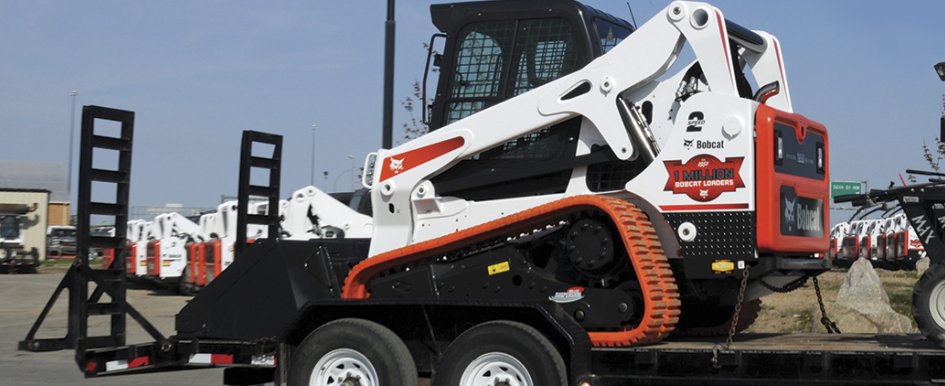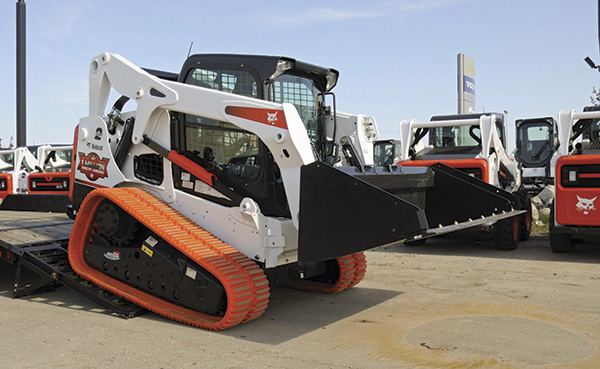
Transporting a compact loader seems like a simple task; however, moving compact equipment from one jobsite to another involves several steps that should not be overlooked when using good hauling techniques.
Sound hauling practices, such as using the right-sized transport and towing vehicles and correctly loading, positioning and securing equipment, will help minimize loading issues that slow down your crew's productivity. Follow the three steps below to help your employees properly transport your compact loader.
1. Select Transport and Towing Vehicles
The right match between the transport and towing vehicles and the compact equipment is the first step to getting your machine from one jobsite to another safely. Be sure that the transport and towing vehicles are of adequate size and capacity for the weight of the machine and attachments being transported.
Trailers are one of the most popular and efficient ways to properly transport compact loaders and attachments. Some smaller equipment can be transported on a 10,000-pound trailer, while larger equipment may require a 20,000- to 30,000-pound trailer or larger.
With a compact loader and couple of attachments, you will most likely need a larger trailer with a bigger weight rating to handle the load you are moving. Adequately designed ramps of sufficient strength are needed to support the weight of the machine when loading onto a transport vehicle.
2. Load the Machine
Loading machines and other equipment onto trailers requires consistency to ensure critical actions are not missed. Always disengage the auto-idle feature (if equipped) when loading or unloading the machine on a trailer. Make sure mud, sand and any other debris are removed from the loader before loading the machine. When you are ready to load the machine onto the trailer, travel up the ramp with the heaviest end up. The loader will be heavier in the rear than in the front unless it is connected to an attachment, which will make it heavier in the front. The rear of the trailer must be blocked or supported when loading or unloading the machine to prevent the front end of the trailer from rising up. Position the loader onto the trailer by the manufacturer's guidelines.

3. Secure the Loader
The third step in the transport process is also critical and is best performed in a methodical manner to ensure that each measure is performed. Once the machine is on the trailer, operators should lower the attachment to the floor of the trailer, stop the engine and engage the parking brake. Upon completion of a machine's positioning, the next step is to install the chain at the front and rear loader tie-down positions, as identified by your owner's manual. Finally, secure the chains and binders using recommended practices listed in the owner's manual.
Securing machines in addition to attachments and accessories is especially important as contractors are often hauling several items to jobsites on one trailer. Some companies are able to customize their trailers to accommodate their most commonly used attachments by adding side pockets or racks specially built to hold them. Operations that might benefit from a customized trailer include concrete removal companies that operate a hydraulic breaker or grapple bucket, or landscaping companies that use buckets to prepare sod or seed.
With efficient planning and loading procedures, contractors' trailers can accommodate a wide variety of attachments to avoid using multiple vehicles to move equipment and attachments from jobsite to jobsite. Creative trailer designs and careful planning can add up to significant, long-term vehicle and fuel savings.
Following the fundamentals of transporting compact loaders can not only save crews time because procedures are performed consistently and orderly, but it can save money as trailer customization allows for more efficient hauling. By following the listed three steps and instructions, along with the recommendations in your owner's manual, can help minimize issues or problems the next time you transport your equipment from jobsite to jobsite. Planning ahead and paying attention to seemingly minute details will pay off when you are saving time hauling your equipment.
